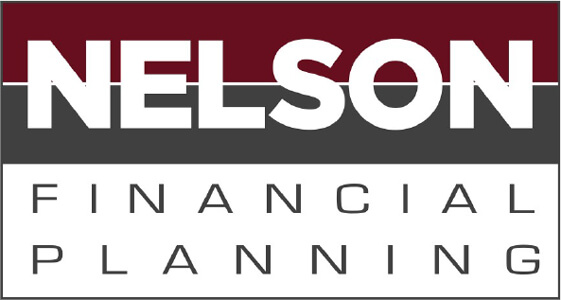Did you know that one in five people spend more time planning vacations than their own retirement? Retirement planning is not something you can afford to “set and forget.” So, when was the last time you reviewed your retirement plan? Was your approach limited to adjusting your monthly contributions and hoping for the best? Spoiler alert: That won’t cut it.
Burning Questions About Retirement Savings
The road to a secure retirement often starts with two questions: “How much should I save?” and “How much do I need for retirement?” Though these questions might seem straightforward, the answers can be complex. Various factors—including your age, current financial status, and lifestyle goals—contribute to these elusive figures. Our mission is to guide you in crafting a comprehensive plan to meet your retirement goals, because it’s never just about numbers; it’s about making those numbers work for you.
The Cost of Procrastination
Let’s say you’re 25 years old, and you start investing $275 a month at an 8% rate of return. By the time you turn 65, you’ll have close to $1 million, having contributed just $132,000 of your own cash over the years.
Now consider the alternate scenario: you procrastinate and start investing at age 50. To reach the same $1 million mark by age 65, you’d need to shell out 10 times the amount, or a whopping $2,750 per month. Your contributions would skyrocket to nearly $500,000. Clearly, the power of compounding interest is not something to ignore, and procrastination can indeed be costly.
The Importance of Starting Small
If a large monthly investment seems intimidating, start small. Putting away just $50 or $100 a month is better than nothing. Cultivating the habit of saving is vital, and as your financial situation improves, you can gradually increase your contributions. The key takeaway here is that it’s better to invest a little early on than to invest nothing at all.
Comparing Global Saving Habits
It might come as a shock to learn that despite living in the country with the world’s largest GDP, Americans save just 1.5% of their annual incomes. Globally, we rank in the bottom 10 for savings. Countries like Norway, Chile, and South Korea lead the pack, with Norway boasting a staggering 22.4% savings rate. Our collective focus needs a dramatic shift from spending to saving.
Building a Budget That Works Today and Tomorrow
When planning for a stable financial future, a well-designed budget is your most powerful tool. The acronym B-U-D-G-E-T-S offers an in-depth look at what you must consider throughout your financial planning efforts. Understanding and following each element leads to better financial decisions and a more fulfilling retirement.
B Is for Balance
The key to a successful budget is balancing your income and expenses. But it doesn’t stop there. You must also consider short-term needs against long-term goals, including retirement. To achieve this balance, it’s advisable to “pay yourself first,” prioritizing saving over immediate spending.
Utilizing multiple “savings baskets” can help you focus your efforts. Consider having separate accounts for emergency savings, retirement, and even discretionary items like travel or shopping. This way, each “basket” serves a unique purpose, and you’ll be less tempted to raid one fund to feed another.
U Is for Understanding
Knowledge is power, especially when it comes to financial planning. Dig deeper into your current financial situation, including your risk tolerance, needs, and wants. This involves learning to differentiate between necessities (like food, shelter, and transportation) and luxuries that you desire but don’t really need.
One effective strategy is to maintain a strict shopping list, avoiding the temptation to give in to impromptu wants. Instead, add those to a separate list. If you still want them after a month, you’ve shown yourself they’re worth purchasing.
D Is for Addressing Debt
Debt is a reality for many Americans, with the collective credit card debt alone reaching nearly $1 trillion. Understanding your short- and long-term obligations is vital.
If you’re struggling with multiple debts, consider consolidating them or transferring balances to a 0% interest card. This doesn’t solve the root issue but can make the debt more manageable. Prioritize paying off debts with the highest interest rates first.
G Is for Goals
Having immediate and drawn-out goals guides your budgeting efforts. Whether you’re saving for a new car, a down payment on a home, or retirement, setting specific goals makes the journey easier. Keep the 60/40 rule in mind. This means whenever you get a pay raise, save 60% of the additional income and use the remaining 40% to enhance your lifestyle. This approach helps keep you disciplined while still allowing for a bit of indulgence.
E Is for Expectations
Managing expectations means being realistic about what your investments can yield and what kind of lifestyle you can maintain. Avoid the urge to keep up with the Joneses; what works for your neighbor might not work for you.
T Is for Transitioning
This part of the acronym signifies the importance of being prepared for life changes and transitions. Retirement planning, career changes, and family planning are just a few instances where transitioning will have a financial impact.
S Is for Solutions
The ultimate goal of budgeting is to find solutions to financial challenges. Whether by reducing expenses, increasing income, or a bit of both, your aim is to find a sustainable way to meet both your current needs and future aspirations.
Contact Nelson Financial Planning
Budgeting and planning for retirement shouldn’t take a backseat to short-term pleasures. By following the tips outlined above, you’ll create a roadmap for financial well-being and position yourself for a more secure retirement.
To seek professional advice from a team of qualified, compassionate Certified Financial Planners, please turn to Nelson Financial Planning in Winter Park, FL. We can help you change your life with a successful financial plan that provides peace of mind for the future.
Call us today at 407-307-3061 to learn more!
- 8 Wonders1
- Bank Investments3
- Beating Inflation1
- Budget for Retirement3
- Corporate Transparency Act2
- Digital Currency1
- Energy Tax Credits1
- ESG Funds1
- Featured Blog0
- Financial Planning10
- Financial Success3
- Importance of Dividends2
- Investment Portfolio5
- Investment Strategy2
- IRA1
- Joel Garris1
- Nelson Financial Planning5
- Net Worth Improvement1
- Next Gen Dollars and Sense1
- Pension Plans1
- Retirement “Secure” Act2
- Retirement Planning2
- Retirement Regrets4
- Social Security3
- Tax Liability3
- Tax Planning6
- Year-End Tax Changes3






